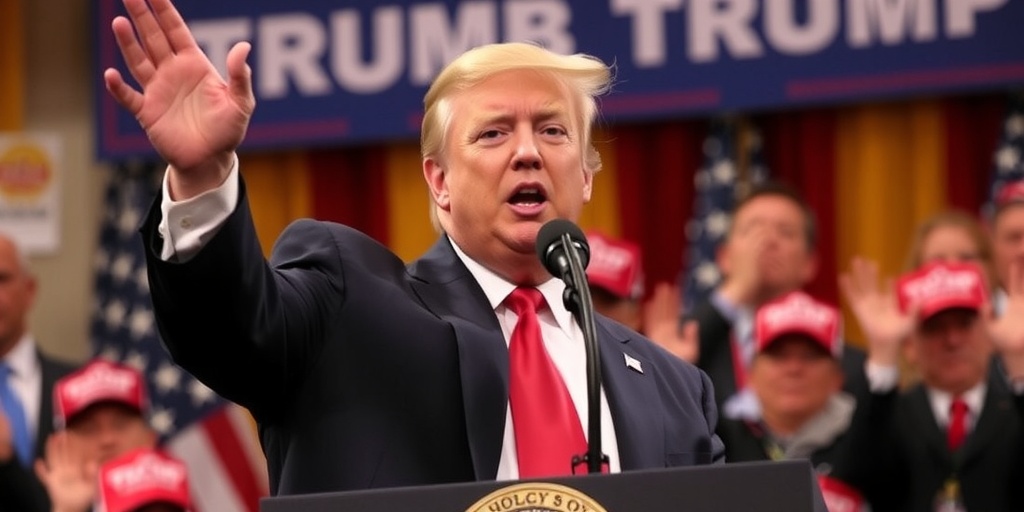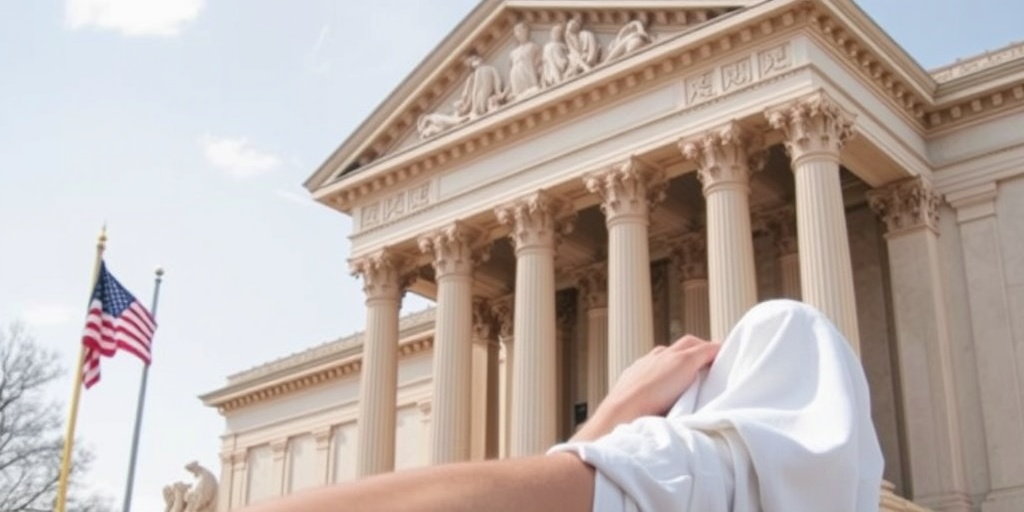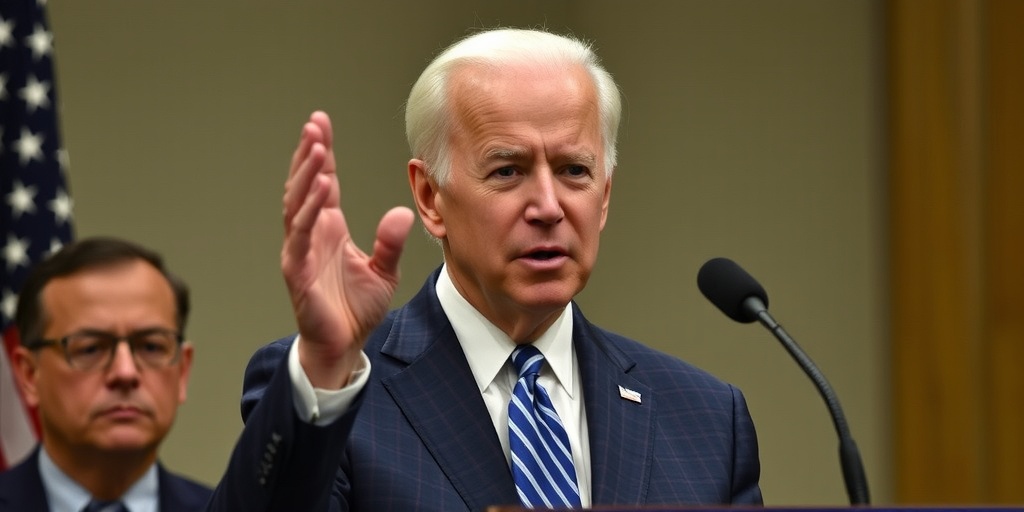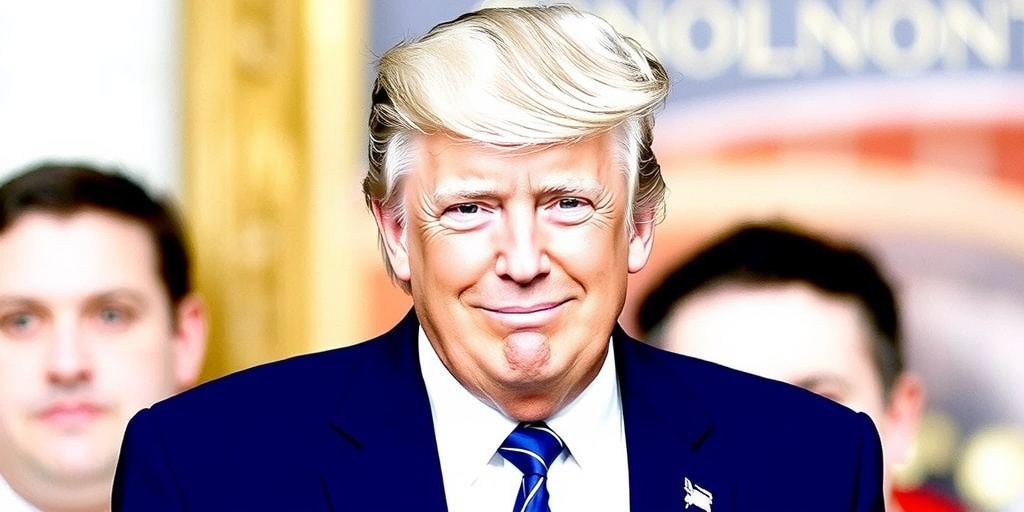Now Reading: Trump Points to Past Wins as Evidence to Revitalize ‘Declining’ Nation
-
01
Trump Points to Past Wins as Evidence to Revitalize ‘Declining’ Nation
Trump Points to Past Wins as Evidence to Revitalize ‘Declining’ Nation

President Trump’s Second Inaugural Address: A Call to Action or a Dark Reflection?
On Monday, the nation witnessed the second inaugural address of President Donald J. Trump, marking his return to the political forefront with an address that diverged starkly from the optimistic tones typical of such events. Where his initial speech four years ago delved into dark portrayals of American society as mired in “carnage,” the latest iteration offered a more personal narrative, framing Trump as the singular savior capable of addressing the nation’s myriad challenges.
Delivering a 29-minute address shortly after noon, Trump painted an unnerving picture of America. Describing the country as being under siege from a “radical and corrupt establishment,” he asserted that the foundations of society were "broken" and "in complete disrepair." This depiction, however, contrasts sharply with the realities acknowledged by many economists and analysts, who point out that the U.S. is experiencing economic growth, decreasing inflation rates, a decline in illegal immigration, a booming stock market, and historically low violent crime rates. Furthermore, military engagements abroad have remained limited under his administration, making Trump’s dire assessment appear misleading to critics.
Central to Trump’s rhetoric is his repeated assertion that he can rectify the issues facing America. He has successfully built a core of loyal supporters by positioning himself as the only one capable of restoring the nation’s values, echoing themes from his first term, which revolved around a constant battle against perceived adversaries — both domestic and foreign.
As the 47th president, Trump’s speech emphasized the sense of urgency he perceives in his mandate, claiming that his recent election is a call to “reverse a horrible betrayal” and restore the American people’s faith, wealth, democracy, and freedom. He referred to this period as the dawn of a “golden age,” drawing upon his own electoral victory as proof of divine intervention — a personal narrative that he claimed underscores his purpose to restore greatness to America.
While the cadence of Trump’s delivery in this inauguration was notably more restrained than his typically fiery rally speeches, his message remained uncompromising. He addressed a smaller audience inside the Capitol Rotunda, which, due to frigid weather, was a stark contrast to the expansive crowds of past inaugurations. Trump read from a teleprompter, indicating a more serious tone compared to earlier speeches, yet he did not shy away from presenting a firm agenda.
Trump took a combative stance on several issues, promising to leverage federal and state law enforcement against violent immigrants and gangs, invoking historical legislation such as the Alien Enemies Act of 1798 to bolster his position. His adamant statements on social issues were pronounced: he declared that there would only be two genders recognized in America and dismissed preferences for electric vehicles, insisting on maintaining stiff tariffs against foreign nations. Additionally, he made audacious claims about reclaiming the Panama Canal by force if necessary, and changing the name of the Gulf of Mexico to Gulf of America.
Revisiting themes from his inaugural address in 2017, where he spoke of societal decay and loss, this speech reflected similar concerns but with a shifting focus on solutions rather than mere complaints. He expressed his aim to instill a sense of unification, framing it around the need for Americans to rally behind his leadership. Yet, his notion of unity seemed conditional, essentially advocating for collective support of his agenda as a pathway forward.
Throughout the speech, Trump attempted moments of reflection, linking his aspirations to the legacy of civil rights figure Martin Luther King Jr. He expressed a desire to be remembered as a peacemaker and unifier, though he quickly clarified that this unity must be in alignment with his vision.
In conclusion, President Trump’s second inaugural address was a reflection of his ongoing narrative as a leader facing a beleaguered nation. His promise to restore America was echoed alongside sweeping policy goals, drawing a stark line against perceived social and political injustices. The question remains whether this speech will resonate with the broader American populace or further divide an already polarized electorate. His assertions of unity, coupled with an unapologetic stance on divisive issues, paint a complex picture of his vision for the future and the America he hopes to build.
Stay Informed With the Latest & Most Important News
Previous Post
Next Post
-
 01New technology breakthrough has everyone talking right now
01New technology breakthrough has everyone talking right now -
 02Unbelievable life hack everyone needs to try today
02Unbelievable life hack everyone needs to try today -
 03Fascinating discovery found buried deep beneath the ocean
03Fascinating discovery found buried deep beneath the ocean -
 04Man invents genius device that solves everyday problems
04Man invents genius device that solves everyday problems -
 05Shocking discovery that changes what we know forever
05Shocking discovery that changes what we know forever -
 06Internet goes wild over celebrity’s unexpected fashion choice
06Internet goes wild over celebrity’s unexpected fashion choice -
 07Rare animal sighting stuns scientists and wildlife lovers
07Rare animal sighting stuns scientists and wildlife lovers





















